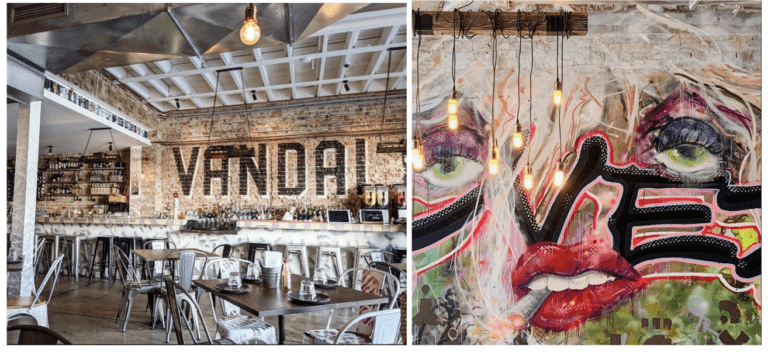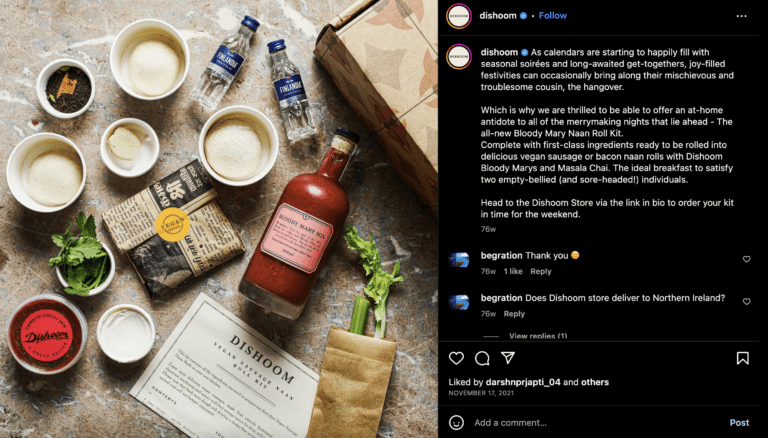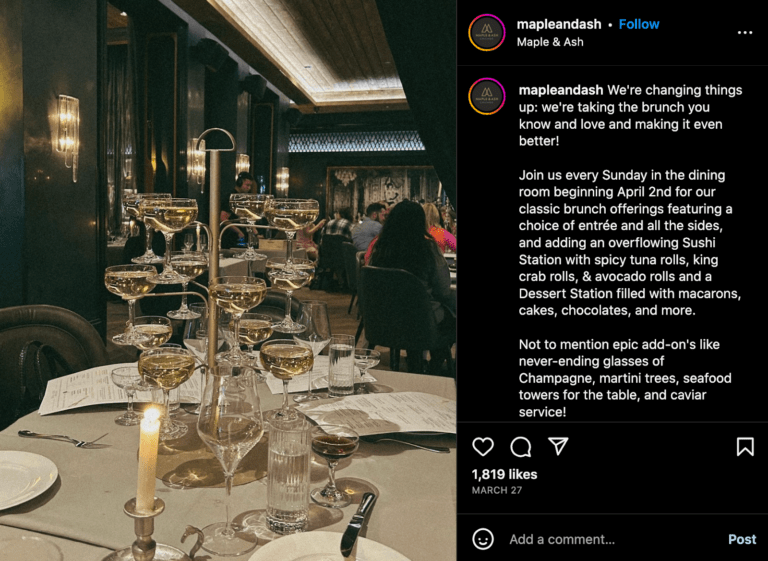From Bland to Brand: How to Establish a Unique Restaurant Identity
Sevenrooms
5 min read
Jun 6, 2023

Sevenrooms
5 min read
Jun 6, 2023

Your restaurant is more than just a business – it’s a brand! From your logo and interior design to how you write captions on social media, restaurant branding sets you apart from your competitors.
But a restaurant brand is more than just restaurant names, logos and taglines. A well-established restaurant brand is also about feeling, cuisine and hospitality. Sure, Mickie D’s built a business around its golden arches, but Ruth’s Chris created a franchise backed by quality proteins and refined elegance.
Done right, restaurant branding distinguishes you from competitors by highlighting your skillset and differentiators. This guide to restaurant branding will walk you through the steps you need to take to make your business stand out.
Restaurant branding is in the food you serve, the vibe you create and the service you give.
More specifically, it’s how people perceive your restaurant based on visual cues (such as decor or website design), experiential cues (like ambiance and service) and language (the words used by servers and in menu items). When these key branding elements align, your business grows in more ways than one.
Consistent branding makes your restaurant instantly recognizable. Seamless implementation throughout your venue, like the same branded colors onsite and online, helps customers associate your business with your color palette, fonts and language.
Restaurant branding doesn’t just make you unique; it also generates sales. Research shows that consistent branding can increase revenue by 33%. With profit margins as low as 3% at full-service restaurants, an increase in sales can majorly impact the bottom line. When you formalize brand guidelines as part of your restaurant’s marketing plan, it’s easier to maintain consistency, and in turn, earn more profit from guests who repeatedly dine with you.
Restaurant branding differentiates you from other restaurants serving similar food types. A big part of branding is defining your unique selling point — your “why” and your “what.” Restaurants that successfully convey their mission and competitive positioning in the market better attract their ideal customer base.
In everything you write, print, say and send, highlight why your product, price, or place is better than the rest, so you can build a loyal customer base that buys into your mission and trusts your brand.
A restaurant that is clear on its mission and values doesn’t just retain customers, they retain employees. Teams work better together when they’re aligned under purpose and are clear in the company’s steps to achieve it. This mission and values aren’t just things you write in your employee handbook and on your restaurant website: they’re important codes for how your team treats customers and each other. The latter is especially important when creating a strong staff culture.
FYI: When you follow a values-based approach to hiring, you create a unified workforce that believes in the mission and shares the same values. These factors make it easier to retain talent, which is critical in an industry that experiences 73% turnover annually and loses nearly $6,000 for every employee that leaves.
Branding encompasses various visual and written elements that, when used properly, can have a powerful impact on your business.
Follow these five steps to develop a thoughtful brand for your restaurant.
The more you know about who you’re trying to serve, the better you can create a brand that speaks to your ideal customer. If you’re an established restaurant that wants to grow, you can use key data, such as dining preferences and order history, as well as information about your customer demographics, to identify who you want to reach and how you can turn them into a loyal customer.
If you’re opening a restaurant from scratch and don’t yet have access to customer data, start by conducting general market research and focus groups to learn more about the kind of customer you want to target.
Pro Tip: You might have access to existing customer data if you use a restaurant CRM for guest management and engagement. In addition to using existing data, you can also send customers feedback surveys to ask them more specifically who they are and what appeals to them about your restaurant.
Define your purpose by writing a mission statement. This statement will help direct the rest of your branding decisions.
In your mission statement, explain why your restaurant exists. For example, UK-based restaurant group Dishoom’s mission is to “pay homage to the Irani cafés and the food of all [of] Bombay.”
Next, write your unique sales proposition: a statement that explains what makes your restaurant different. You can create this by considering your products, pricing, location and niche.
Take inspiration from CUT by Wolfgang Puck, whose USP is to be the place “where New Yorkers broker deals over power meals, and where Tribeca’s residents come to dine, wine and unwind, while world travelers immerse themselves in downtown NYC’s emerging culinary scene.”
Now convert your mission and unique sales proposition into visual and written elements. Think about how you can convey what you stand for in your logo design. Select colors that represent this identity. Create the remaining brand elements listed above.
If you can afford the investment, hire a branding agency or expert. Ask fellow restaurateurs for referrals, ask around in local Facebook groups for business owners or hire a freelancer from Fiverr. Successful restaurant branding will also help set you up for a strong marketing presence.
After you’ve created your brand guidelines, it’s time to roll out your new branding across your restaurant and marketing channels. Update your website with your new logo, graphics, colors, fonts and images. Update your restaurant menu with on-brand language. If applicable, renovate your space to represent your vision.
Vandal, a plant-based Mexican restaurant in Sydney, uses its edgy branding to wow customers and create a memorable dining experience that keeps people coming back for more. Visually, Vandal’s brand is spot on. Vandal’s logo is memorable and consistent — a robber’s mask splattered with graffiti that exemplifies the restaurant’s rebellious attitude.
On their website they write “We never want to define ourselves in a way that puts us in a corner, ever-evolving and free to experiment with our food – some people say we’ve ‘vandalised’ mexican food – they’re probably right – but to those naysayers we say ‘f*ck em’, we cook what we want – how we want – no rules, just fun with flavours.”
 Vandal’s logo
Vandal’s logo
Their interior design is industrial and edgy. You’ll find exposed brick, graffiti, metal chairs and its logo painted prominently on the wall behind the bar.
 Vandal’s interior is consistent with the taqueria’s edgy branding
Vandal’s interior is consistent with the taqueria’s edgy branding
As noted earlier, Dishoom is a UK-based restaurant group paying homage to Bombay’s Irani cafes by mimicking traditional designs featuring mirrored walls adorned with graphic menus. In addition, Dishroom’s paper menus look like the newspapers read in those cafes.
Dishoom extends their branding beyond their restaurants with merchandise. Customers can take home regional pantry items, meal kits and gifts.
 Dishoom’s quirky, custom hangover kit is a perfect example of establishing an authentic brand personality
Dishoom’s quirky, custom hangover kit is a perfect example of establishing an authentic brand personality
Refined steakhouse Maple and Ash in Scottsdale and Chicago is all about luxury, and they take every opportunity to show it in their branding.
 Maple and Ash’s martini trees are on theme for a brand that’s all about excess
Maple and Ash’s martini trees are on theme for a brand that’s all about excess
The restaurant’s $200 I DON’T GIVE A F*@K chef’s tasting menu is the epitome of opulence. They also offer martini trees of champagne or espresso martinis at brunch and have quotes about hedonism on their menu.
Restaurant branding isn’t a one-and-done exercise. Once you’ve established your brand guidelines, they should serve as the basis for your omnichannel marketing strategy. Under this strategy, you should leverage every marketing channel available to you — paid, organic and social — rather than focusing on just one. This multi-faceted approach is beneficial because it helps you reach customers where they are, while reinforcing brand consistency and generating loyalty.
SevenRooms hospitality CRM can help you create a consistent brand experience across various guest touchpoints. Book a demo to learn more today.
Restaurant branding is a larger effort to define your value, mission, unique selling point and purpose. Under a branding strategy, you’ll create logos, design schemes, and menus that define your niche. Restaurant marketing campaigns are the efforts you make to build awareness about your brand through social media, organic and paid marketing, email and more.
Arguably, there is not one aspect of branding more important than the other. However, the most successful restaurant brands have a unique voice and offering that other competitors do not. Go beyond serving a menu of unique dishes to create an experience customers can’t find elsewhere. This often requires all elements to work together, including visual branding, experiential branding, voice and tone.
Smaller establishments should leverage data to learn about their ideal customer and position themselves as a standout in their industry. Most importantly, small restaurants should focus on a meaningful mission statement and value proposition that will allow them to forge an emotional connection with customers. A unique restaurant concept can also help differentiate you from others.